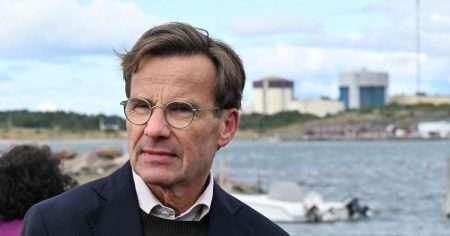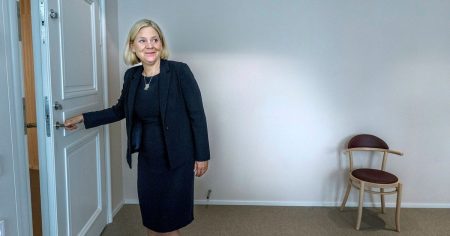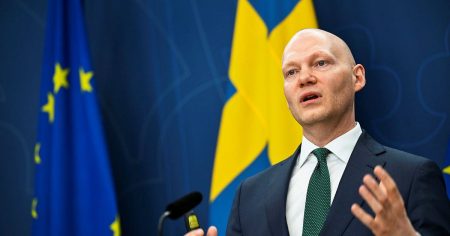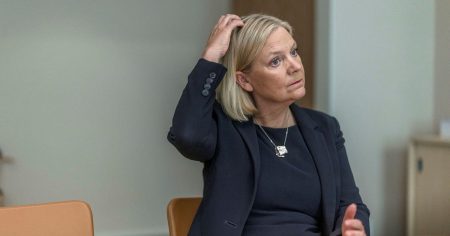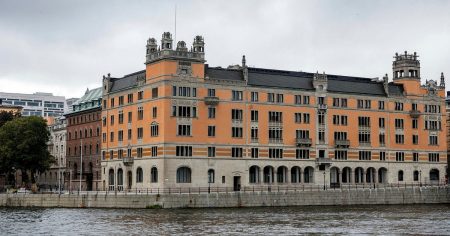The Liberal Party of Sweden finds itself grappling with internal divisions and anxieties regarding its future political direction, specifically concerning its relationship with the Sweden Democrats (SD). While the party’s official stance, affirmed by a national convention, is to contest the 2026 elections independently and to neither participate in nor enable a government involving the SD, underlying tensions persist. These tensions stem from party leader Johan Pehrson’s repeated assertions that there are few policy-related limitations to cooperation with the SD, creating unease among many Liberal members who fear a betrayal of the party’s values and campaign promises. This internal discord is further fueled by a sense of déjà vu, as similar debates and maneuvering around the SD question occurred in the lead-up to the previous election.
Pehrson’s emphasis on gaining political power, coupled with his categorical rejection of any collaboration with the Social Democrats, has left some Liberal members feeling disillusioned and questioning their ability to campaign for the party in the next election. Many feel they were misled by Pehrson and the party leadership during the last election cycle regarding the extent of potential cooperation with the SD. This sentiment of distrust is exacerbated by Pehrson’s recent public statements hinting at the possibility of ”reassessments” regarding the SD’s participation in government, drawing parallels with the Social Democrats’ shifts in stance on NATO and nuclear power. These statements have sparked criticism from within the party, particularly from the Liberal Youth, further highlighting the deep-seated anxieties and divisions surrounding the issue.
The timing of a recent opinion piece in the party’s newspaper, advocating for a change in the party’s stance on the SD and government formation, has also fueled suspicion. The article, authored by the chief of staff of a member of the Liberal Party leadership, appeared amidst a flurry of similar editorials in right-leaning media outlets, reminiscent of the pre-election maneuvering of the previous election cycle. While the leadership member in question has distanced himself from the article’s position, many within the party view it as a strategic move to initiate a campaign for a policy shift. This perceived orchestrated effort contributes to the prevailing atmosphere of mistrust and apprehension within the Liberal Party ranks.
This internal struggle is taking place against a backdrop of uncertainty about the party’s actual course of action should the right-wing bloc win the next election. The Liberal Party’s commitment to excluding the SD from government is being tested by the political realities of a potential power shift. Pehrson’s ambiguous statements about potential ”reassessments” further complicate the picture, leaving many party members questioning the sincerity of the leadership’s commitment to the party’s official stance. The Liberal Youth has been particularly vocal in its criticism of Pehrson’s remarks, adding to the growing pressure on the party leadership to clarify its position.
The upcoming party convention in November 2024 is shaping up to be a crucial moment for the Liberal Party. Beyond policy decisions, the convention is expected to address the issue of internal power dynamics, with proposals for new rules aimed at preventing the party leadership from overriding the parliamentary group and party board, as many felt happened with the Tidö Agreement. However, few observers believe that the leadership will alter its position on the SD before the election, fearing a mass exodus, especially from the Stockholm chapter, which could jeopardize the party’s chances of reaching the parliamentary threshold in 2026.
In essence, the Liberal Party is navigating a precarious path, caught between its stated commitment to excluding the SD from government and the pragmatic considerations of political power. The internal divisions, fueled by distrust of the party leadership and anxieties about a potential shift in policy, threaten to destabilize the party and impact its electoral prospects. The upcoming party convention will serve as a critical juncture for the Liberal Party to address these internal tensions and chart a clear course for the future. The party’s ability to resolve its internal conflicts and present a unified front will be crucial for its survival and relevance in the evolving Swedish political landscape.







